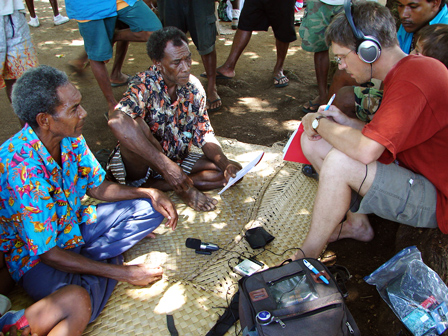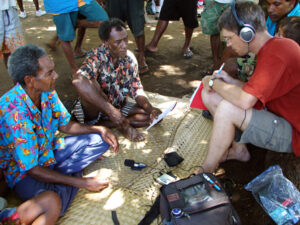The topics of Linguistic Diversity and Endangered Languages hold great importance in our globalized society. Many languages are interwoven into the complex tapestry of human communication; each language is a distinct storehouse of identity, culture, and history. However, many languages are in immediate danger of going extinct as globalization continues to change our societies. Concern over this problem is growing among anthropologists, linguists, and those who support cultural preservation.
The intricate relationship between the survival of many linguistic traditions and the forces of globalization is embodied in the concept of Linguistic Diversity and Endangered Languages. It brings up important issues regarding oral traditions, indigenous knowledge preservation, and the inherent worth of language diversity. Developing methods to protect these linguistic gems requires an understanding of the causes and effects of language endangerment.
In this investigation, we explore the complex aspects of linguistic variety, the causes of language endangerment, and the crucial initiatives taken to save and revitalize endangered languages. These problems highlight how important it is that we preserve and safeguard the diversity of Linguistic Diversity and Endangered Languages for coming generations.
Quick Navigation
Linguistic Diversity and Endangered Languages
The Risk to Diversity in Linguistics
The Consequences of Language Endangering
The Effects of Language Loss
Attempts to Preserve Endangered Languages
The Use of Technology in Conservation
Contributions from Individuals and Communities
Read Also: Top 10 Highest Paying Careers in the World Today
Linguistic Diversity and Endangered Languages
What does linguistic diversity mean, and how does it relate to endangered languages?
The vast range of languages spoken around the world, each of which represents a distinct communication system ingrained in a particular culture, is referred to as linguistic diversity. Because it reveals the rich fabric of human expression and helps us recognize and value the diversity of cultures around the world, it is crucial in the context of endangered languages. It is impossible to overestimate the value of linguistic diversity since it preserves historical information, regional expertise, and the shared identity of various people.
The variety of languages speaks to the complexity of human nature; each language represents a particular method of understanding and interacting with the outside world. This complex tapestry is being eroded by the loss of linguistic diversity. Particularly vulnerable to extinction are endangered languages, which carry with them centuries’ worth of accumulated wisdom, customs, and distinctive worldviews. It is morally necessary to preserve linguistic diversity in order to guarantee that the intellectual and cultural legacies of these languages are preserved for upcoming generations.
What causes language declines, and how do languages become endangered?
Due to a complex interaction of political, social, and historical circumstances, languages can become endangered. Their reduction is attributed to a number of important factors:
Globalization: Smaller, indigenous languages have been marginalized as a result of a few main languages’ dominance in the media, trade, and educational system. These languages may become less widely spoken and transmitted as a result, putting them in danger of going extinct.
Cultural Shifts: Younger generations are frequently less motivated to study and utilize their original languages as communities experience cultural transitions and acquire more dominant cultures and languages.
Migration: Communities that disperse as a result of political or economic forces may have fewer speakers of their languages, which raises the possibility of language extinction.
Language Policies: Governmental regulations may occasionally stifle the use of minority languages in order to promote the use of the dominant national tongue. Language variety may suffer as a result of this.
Lack of Documentation: The absence of written records for many endangered languages makes it difficult to maintain and revitalize them because there is little to no documentation of the vocabulary, grammar, and cultural background of these languages.
What effects does the loss of a language have on scientific understanding as well as culture?
In terms of culture and science, language loss is severe and permanent. It denotes the loss of a distinct worldview, customs, oral histories, and a feeling of identity from a cultural perspective. Language loss frequently results in the loss of an important component of a community’s history, which undermines social cohesiveness and self-worth. Additionally, it makes it more difficult for traditional wisdom and knowledge to be passed down, from folklore and religious ceremonies to ecological practices and medicine.
From a scientific standpoint, every language serves as a useful source of data for linguistic studies. Learning a language reveals more about the inner workings of the human mind than just practicing grammar and vocabulary. Understanding the universals and particularities of human language is made possible by linguistic diversity. Losing a language is like losing a special piece of the puzzle that linguists use to understand how languages change over time, how they interact with one another, and how they influence communication and thought.
Furthermore, specialized knowledge about the local ecosystem, biodiversity, and cultural practices that might be useful in a variety of subjects like ethnobotany, anthropology, and archaeology is frequently encoded in endangered languages. Losing these languages would mean losing this priceless knowledge base.
What steps are being taken, and how successful are they in preserving and reviving endangered languages?
The many facets of efforts to revive and protect endangered languages differ based on the particulars of the language and the community in question. Among the crucial actions are:
1. Language Documentation: By producing textual and multimedia materials, linguists record and document endangered languages. These are important resources for language revitalization initiatives.
2. Community Language Programs: A lot of towns create language revitalization initiatives, such as adult and child classes, immersion schools, and cultural gatherings. The goal of these initiatives is to restore language transmission across generations.
3. Working together with Elders: Elders who are still fluent in the language are incredibly important. They frequently assist in instructing and passing along the language to future generations.
4. Language Technology: The preservation of languages is greatly aided by technology. It is possible to teach and promote endangered languages through social media, language applications, and internet resources.
5. Government Policies: In several instances, governments have put policies in place to protect minority languages because they understand how important it is to preserve language. Funding for bilingual education and language initiatives may be one of these policies.
6. International Cooperation: To revive and protect endangered languages globally, linguists, scholars, and organizations collaborate to exchange information and resources.
These actions can have varying degrees of effectiveness. The degree of community involvement, the resources at hand, and the backing of governmental and educational institutions are frequently determinants of success. While some languages have been successfully revived, others are still in danger of going extinct. It is a difficult procedure that never ends and calls for constant work and dedication.
If so, how can technology help with the documenting and preservation of endangered languages?
Technology is essential to the recording and maintenance of endangered languages. It contributes in the following ways:
1. Digital Archives: Linguists and communities have the ability to produce digital archives containing dictionaries, transcriptions, and recordings of linguistic resources. The language will be maintained for upcoming generations thanks to these archives.
2. Apps for Language Learning: Software and apps for mobile devices can help with language practice and learning. For students of all ages, they offer easily accessible and interactive resources.
3. Social media and online communities: Speakers of endangered languages can communicate, exchange materials, and practice their language on these online spaces. These communities assist with language revival initiatives and promote a feeling of community.
4. Machine Translation: Resources from endangered languages can be translated and transcriptions can be made more widely available by utilizing advances in machine translation technology.
5. Text-to-Speech Systems: By creating text-to-speech systems for endangered languages, spoken language can be preserved and instructional resources can be developed.
6. Virtual reality (VR) and augmented reality (AR): These two technologies can be used to create immersive language learning environments that let students practice and engage with the language in a digital setting.
Technology can make a substantial contribution to the documenting and preservation of endangered languages when combined with community activities and linguistic knowledge. It makes language revitalization more approachable and interesting by bridging the gap between traditional methods and the digital era.
Recommended
- University Of Edinburgh Global Online Distance Learning Scholarships 2023
- 6 Chinese Scholarships for Burmese students 2024
- Ole Miss Blackboard Login | The University of Mississippi
- Roehampton Moodle Login | University of Roehampton
What role can communities and individuals play in preserving and promoting linguistic diversity in general as well as the preservation of their own languages?
In order to preserve and promote linguistic diversity and native tongues, individuals and communities play a crucial role:
1. Language Use: Speaking a language on a daily basis is the best approach to preserve it. By using the native tongue at home, families can guarantee intergenerational transmission.
2. Education: Creating community classes, after-school activities, and immersion schools can assist the next generation in learning and embracing their mother tongue.
3. Cultural Events: Plan festivals, get-togethers, and cultural events where the local tongue is spoken. This facilitates the development of an encouraging and constructive language-use environment.
4. Elders and Native Speakers: Help and encourage the elderly and native speakers to pass on their wisdom to the next generation. For the rebirth of language, their knowledge is priceless.
5. Cooperation: Join forces with researchers, linguists, and language preservation-focused groups. These partnerships may offer knowledge, skills, and resources.
6. Speak up in favor of laws that encourage language revitalization and preservation. Advocate for financing for bilingual education and language programs.
7. Technology: Accept and make use of technology as a resource for maintaining and learning languages. For your linguistic community, create social media groups, apps, and online services.
8. Cultural Identity: Stress how important your language is to your culture. Demonstrate how it is entwined with the history and identity of your town.
9. Global Links: Establish links with other linguistic communities going through comparable struggles. Exchange tactics and life lessons to promote support amongst people.
Endangered languages and linguistic variety are essential components of our global legacy. A language’s disappearance is a scientific setback as well as a cultural catastrophe. Although there are many obstacles to overcome, there is hope for the preservation and revitalization of endangered languages because to the collaborative efforts of communities, linguists, researchers, and technology breakthroughs. Ensuring that these linguistic jewels survive and keep improving our comprehension of the world is a shared responsibility.
SEE ALSO:
Trust you found our article on The Linguistic Diversity and Endangered Languages helpful. Follow our website for more interesting articles.


